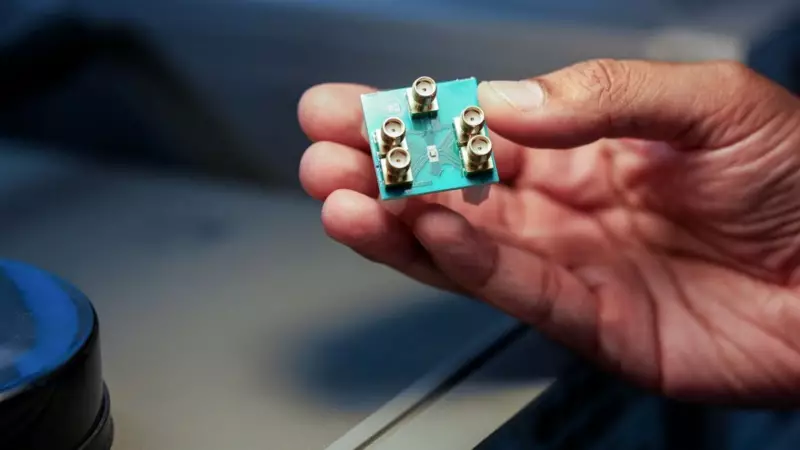
In a breakthrough that could redefine the future of computing, researchers have successfully created the world's first fully functional microwave neural network (MNN) microprocessor. This revolutionary chip, which operates using analogue microwaves instead of conventional digital circuitry, has demonstrated a remarkable ability to outperform traditional central processing units (CPUs).
A New Computing Paradigm
The groundbreaking development was detailed in a study published on August 14 in the journal Nature Electronics. The processor represents a completely new architectural approach, integrating an entire artificial intelligence (AI) neural network onto a single chip that leverages waves in the microwave range of the electromagnetic spectrum. This innovation is particularly crucial for high-bandwidth applications like radar imaging that demand exceptionally fast processing speeds beyond the capabilities of current digital systems.
Bal Govind, a doctoral student at Cornell University and the lead author of the study, explained the core advantage. "Because it's able to distort in a programmable way across a wide band of frequencies instantaneously, it can be repurposed for several computing tasks," Govind said. "It bypasses a large number of signal-processing steps that digital computers normally have to do."
How the 'Microwave Brain' Works
The MNN chip's operation is fundamentally different. It functions within an AI neural network—a system inspired by the human brain's structure—but uses interconnected electromagnetic nodes within tunable waveguides. This 'microwave brain' generates a distinctive comb-like pattern in the waveform of the microwaves.
This frequency comb, with its evenly spaced spectral lines, acts like a precision ruler, enabling the chip to perform extremely rapid and accurate frequency measurements. The integrated circuit processes spectral components by capturing features of input data across a wide bandwidth. This unique design allows the chip to handle everything from simple logic operations to complex tasks like binary sequence recognition and high-speed pattern detection, achieving an impressive accuracy rate of 88 per cent as validated across multiple wireless signal classification problems.
Staggering Speed and Remarkable Efficiency
The performance metrics of the MNN chip are where it truly shines. By operating in the microwave analogue range and employing a probabilistic computing approach, the chip can process data streams on the order of tens of gigahertz—translating to at least 20 billion operations per second. This dramatically outpaces most consumer-grade CPUs, which typically operate between 2.5 and 4 GHz, or 2.5 to 4 billion operations per second.
Alyssa Apsel, co-senior author and director of the School of Electrical and Computer Engineering at Cornell University, highlighted the unconventional thinking behind the design. "Bal threw away a lot of conventional circuit design to achieve this," Apsel noted. "Instead of trying to mimic the structure of digital neural networks exactly, he created something that looks more like a controlled mush of frequency behaviors that can ultimately give you high-performance computation."
Govind further elaborated that while traditional digital systems often require additional circuitry, energy, and complex error correction to maintain accuracy, the MNN's probabilistic approach maintains high accuracy for both basic and advanced computations without increasing power demands or hardware complexity.
Low Power Consumption and Future Applications
Perhaps one of the most compelling advantages of this microwave chip is its exceptionally low power consumption. The device operates on less than 200 milliwatts (0.2 watts), a figure roughly equivalent to the transmit power of a standard mobile phone. This is a fraction of the power required by most conventional CPUs, which typically need at least 65 watts.
This extraordinary efficiency opens the door for the chip's integration into personal devices, wearables, and edge computing systems, where processing occurs locally rather than relying on a central server. It also presents a promising, low-power, high-performance solution for training and deploying AI models, especially in energy-constrained environments and remote locations.
Looking forward, the research team plans to focus on miniaturising the design by reducing the number of waveguides and simplifying the chip's overall architecture. The potential to interconnect multiple microwave combs could further broaden the output spectrum and enhance neural network training capabilities on an even smaller and more efficient device, paving the way for the next generation of intelligent computing.





